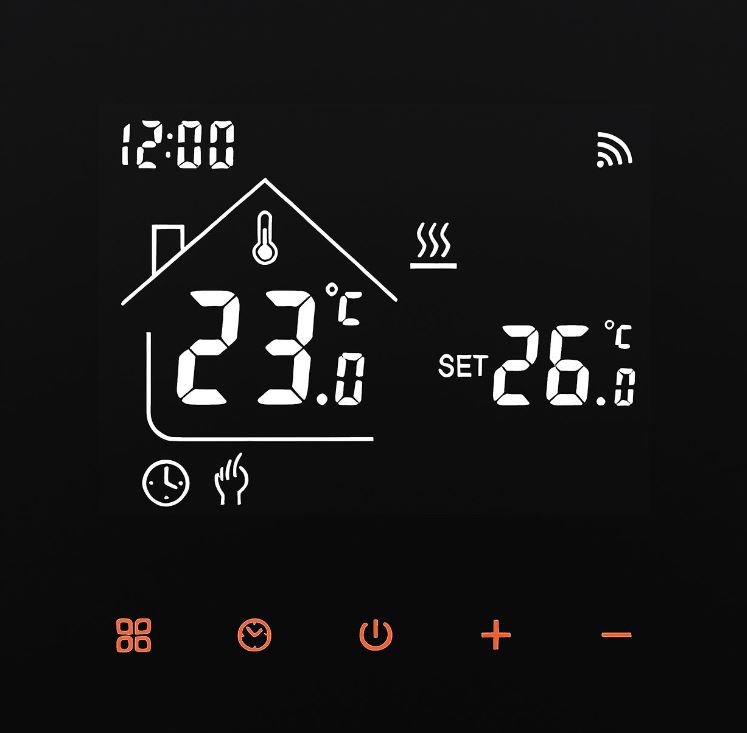
Electric underfloor heating kits have made it easier than ever for homeowners and professionals to install efficient warming systems without the guesswork. These all-in-one packages bundle essential components like heating mats, thermostats, sensors, and installation tools, streamlining the process for both DIY projects and contractor jobs. In an age where home improvements prioritize convenience and performance, these kits are gaining popularity for their user-friendly design and reliable results.
A typical electric underfloor heating kit includes a heating mat or cable, a programmable thermostat, floor sensor, adhesive or tape for securing elements, and sometimes insulation boards or primers. Mats are fiberglass meshes with pre-attached cables, ideal for rectangular areas, while loose cable kits offer customization for irregular shapes. Thermostats range from basic digital models to smart versions with app control, ensuring precise temperature management.
The appeal of kits lies in their completeness, reducing the risk of mismatched parts. For instance, a kit ensures the cable wattage matches the thermostat’s capacity, preventing overloads. Popular wattages are 100-200W per square meter, suitable for most residential applications. Kits are sized by coverage area, from small 1-2 square meter bathroom sets to larger 10+ square meter options for living rooms.
Benefits extend beyond convenience. Kits promote energy savings through efficient components; many include A-rated thermostats that learn usage patterns. Integration with home automation allows scheduling, potentially cutting bills by 10-15%. Heat is distributed evenly, avoiding hot spots, and the radiant nature means rooms feel warmer at lower air temperatures, enhancing comfort.
Installation with a kit is straightforward. Start by planning the layout, ensuring the heating elements cover high-traffic areas without overlapping. Subfloor preparation involves cleaning and leveling, followed by optional insulation to minimize heat loss downward. Roll out the mat, connect to the thermostat via conduit-protected wiring, and test for faults using a multimeter—included in premium kits. Cover with thinset or leveling compound, then install flooring. Total time for a small room: 4-6 hours for experienced users.
Safety is paramount in kits, with built-in features like ground fault circuit interrupters (GFCI) and double-insulated cables. Compliance with UL or ETL standards is common, assuring users of durability. Warranties often cover 10-25 years, with lifetime options from brands like Nuheat or Schluter.
Cost-effectiveness makes kits attractive. A basic 5-square-meter kit might cost $300-$600, including everything needed except flooring. Compared to piecemeal purchases, kits save 20-30% by bundling. Operating costs are low; at 150W/m², a 10m² room uses about 1.5kWh per hour, translating to pennies per use with efficient insulation.
Versatility is a highlight. Kits suit various floors: tile, vinyl, laminate, or even carpet with adapters. For wet areas like showers, waterproof kits with drainage compatibility are available. In renovations, low-profile mats (under 3mm thick) minimize door height issues.
Environmental considerations favor kits using recyclable packaging and low-VOC adhesives. As electric systems, they align with green building trends, especially when powered by renewables. Some kits incorporate eco-friendly materials, like bio-based insulation.
Choosing the right kit involves assessing room size, floor type, and features. For tech-savvy users, Wi-Fi-enabled kits from brands like Heatmiser offer remote monitoring. Budget options from Raychem focus on reliability, while luxury kits include touchscreens and voice control.
Drawbacks? Kits may not fit oddly shaped rooms perfectly, requiring supplements. Over-reliance on included instructions assumes basic electrical knowledge; complex setups need pros. In high-heat-loss areas, additional insulation might be necessary beyond the kit.
Maintenance is hassle-free. Kits’ sealed designs resist moisture and dust, with self-diagnostic thermostats alerting to issues. Annual checks are unnecessary, but monitoring energy use via apps helps optimize performance.
In summary, electric underfloor heating kits democratize access to premium heating, combining ease, efficiency, and economy. They empower users to create warm, inviting spaces without extensive expertise. As innovations like flexible graphene-based elements emerge, kits will evolve, offering even smarter solutions. For anyone embarking on a heating upgrade, these kits provide a turnkey path to underfoot luxury, turning cold floors into welcoming havens year-round.
